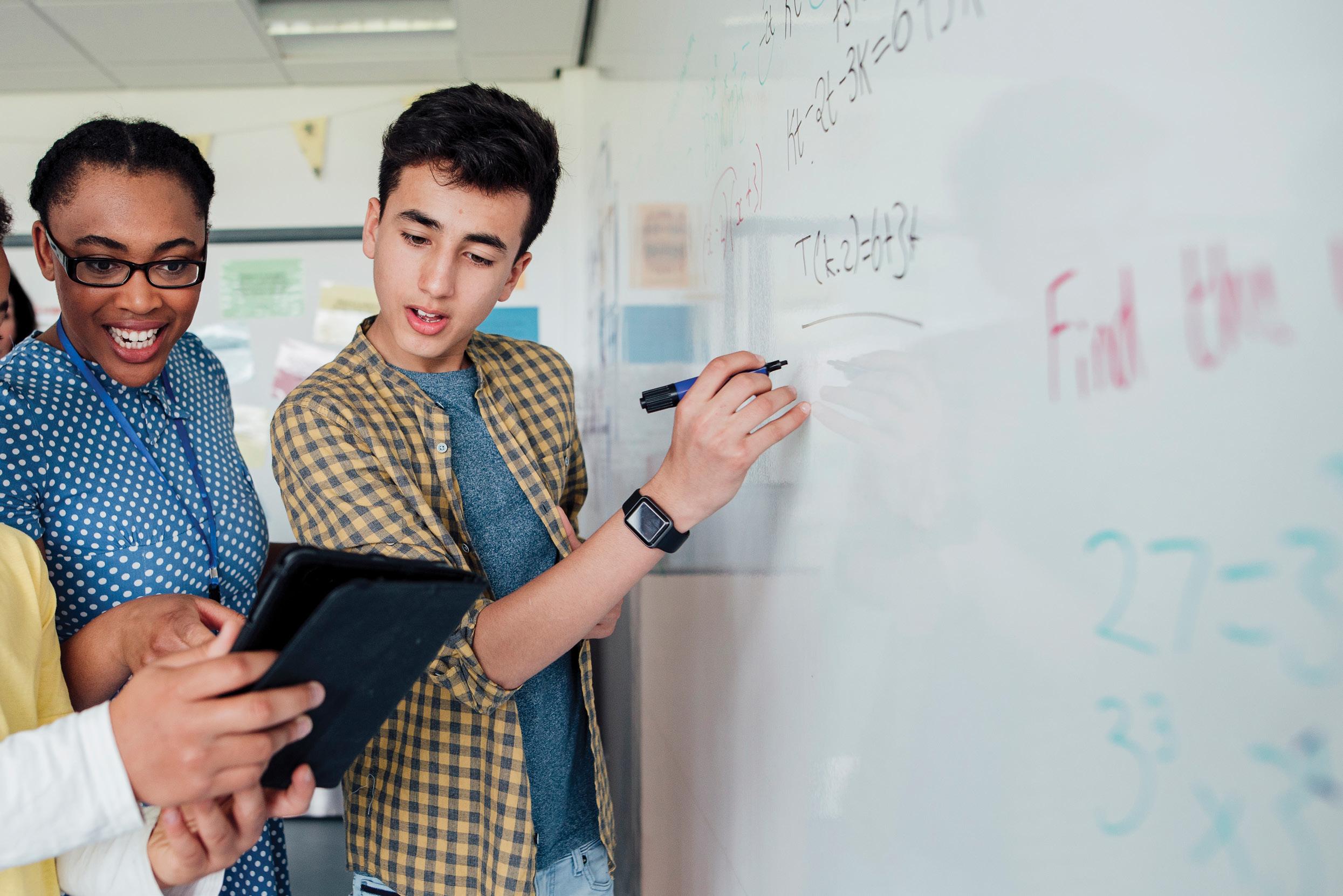
4 minute read
Factfile: Learning to learn
by Dr Roxana Herescu
How can we prepare our students to succeed in a world that is rapidly changing? We see the need to help students develop transferrable skills, to work with people from around the world, to think creatively, analyse sources critically and communicate their views effectively. How can we balance the development of these skills with the demands of the language curriculum? In response to these questions, Cambridge have developed the Cambridge Framework for Life Competencies. In this article, our Secondary Research Manager, Dr Roxana Herescu, discusses the Learning to Learn strand of the Cambridge Framework, how learning to learn benefits learner Dr. Roxana Herescu is a Research Manager at Cambridge University Press where she researches key issues in ELT such as mixed-ability classrooms, critical thinking, and learner autonomy. One other important project she is working on is the Cambridge Framework for Life Competencies. Dr. Herescu was previously a postdoctoral researcher at the Faculty of Education, University of Cambridge, working on a project researching a national professional development course on CLIL.
autonomy and what teachers can do to help students develop these critical skills.
1Why is learning to learn important? Helping students become more aware of how they actually acquire language is the first step to making them more efficient learners. This awareness adds a metacognitive dimension to learning as students are encouraged to think and speak about their own learning (including in English). This helps them discover what learning strategies work best for them, thereby improving their language learning. Once students have established the strategies that work for them, they are able to learn more independently, which prepares them to continue learning throughout their school career and beyond. Teaching and supporting students to become autonomous learners allows them to be immersed in their own learning, to understand their weaknesses and to build on their strengths. They are able to make informed choices and take ownership of their learning, which encourages them to become more motivated and responsible. As students are increasingly able to manage their own learning in the classroom, teachers save time on managing their students’ learning and can focus on a more personalised style of teaching to cater for the typical mixed-ability classroom.

2What kinds of skills are included in the Learn to Learn strand of the Cambridge Framework? The Cambridge Framework for Life Competencies introduces three key competencies which support students in becoming autonomous learners. The first one refers to students use of practical skills for participating in learning. These begin to develop at the pre-primary level when learners develop hand-eye coordination and learn to manage basic tools like pencils. They then learn to recognise and produce letters and numbers, and develop their language skills, which become increasingly sophisticated as they
THE CAMBRIDGE FRAMEWORK FOR LIFE COMPETENCIES
Creative Thinking Critical Thinking
Learning to Learn
Communication Collaboration Social Responsibilities

progress through school and beyond. One important skill for participating in learning is making notes and storing and retrieving information. There are various techniques for taking notes, and students need to experiment and choose the one which best suits their own personal style, needs and resources. Another competency that students need to become autonomous learners is the ability to take control of their own learning. In order to be able to do this, students need to be supported to develop self-regulatory strategies, to maintain motivation and to stay focused on the task at hand in order to achieve the best results. To achieve this, learners need to be clear about their learning goals. The third competency the students need is reflecting on and evaluating their own learning success. Students are encouraged to reflect on their own learning in order to assess what worked for them and what did not. This reflection can lead to evaluation, which, in turn, can inform decisions like whether to persist with, or modify their approach. With this skill, students are able to identify and use learning techniques and strategies which work for them, depending on the context, the learning goal, and the learner’s individual characteristics.
3How can teachers help students develop these skills? Students rely largely on teacher support to develop the competencies they need to feel empowered and equipped to take responsibility for their own learning. Teachers should promote their students’ learner autonomy by helping them to identify for themselves the following:

• what they need to learn (learning goals based on where they are in the learning journey) • how they are going to learn (the learning approaches and strategies that work best for them including organising their learning) • how to evaluate and reflect on their progress and identify the next learning goals (self-assessment techniques)
Students will develop these competencies gradually and teachers should alternate teacher-directed activities with learner-directed ones to ensure that the learners are getting used to both modes of learning.
For more information about Learning to Learn and the Cambridge Framework for Life Competencies, please visit
languageresearch. cambridge.org/cflc









